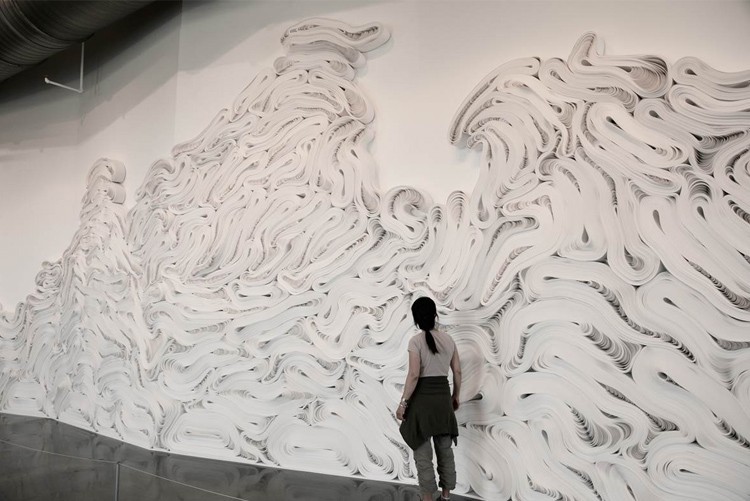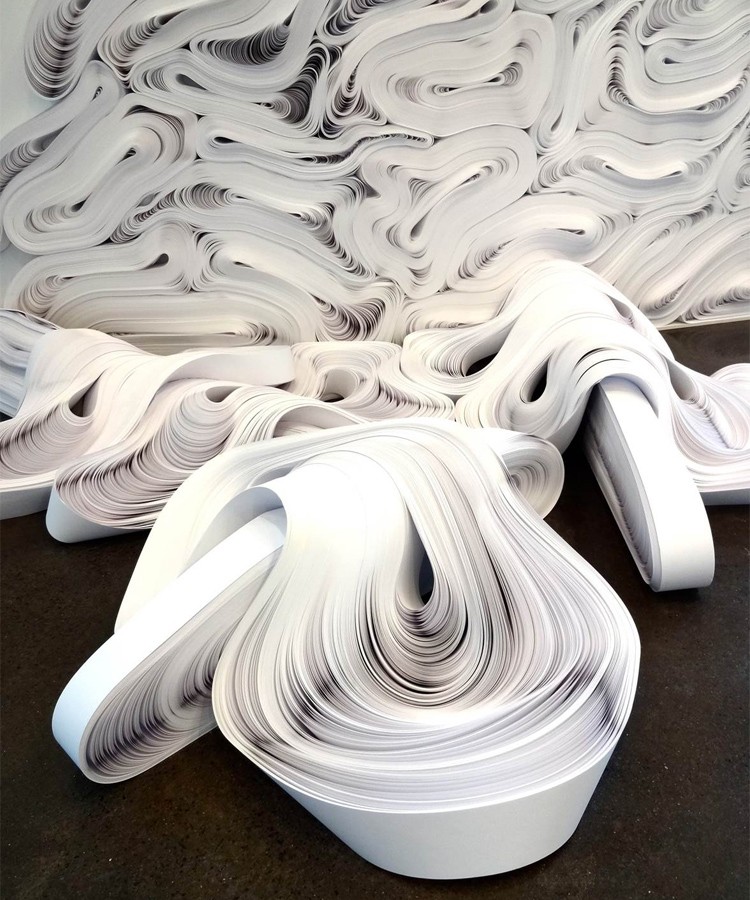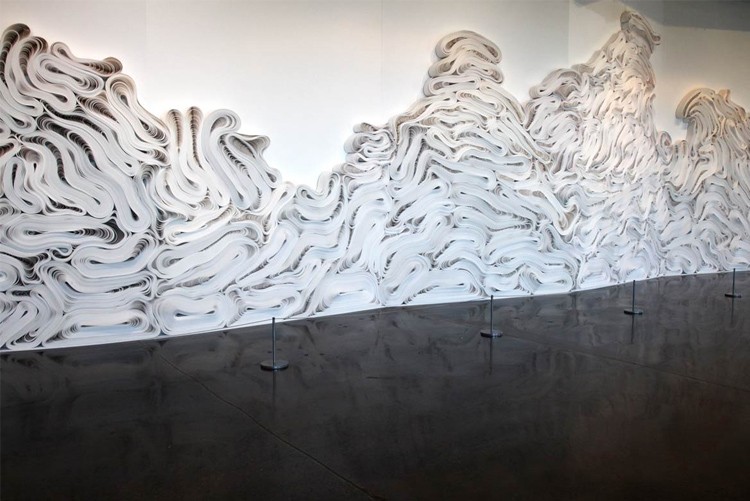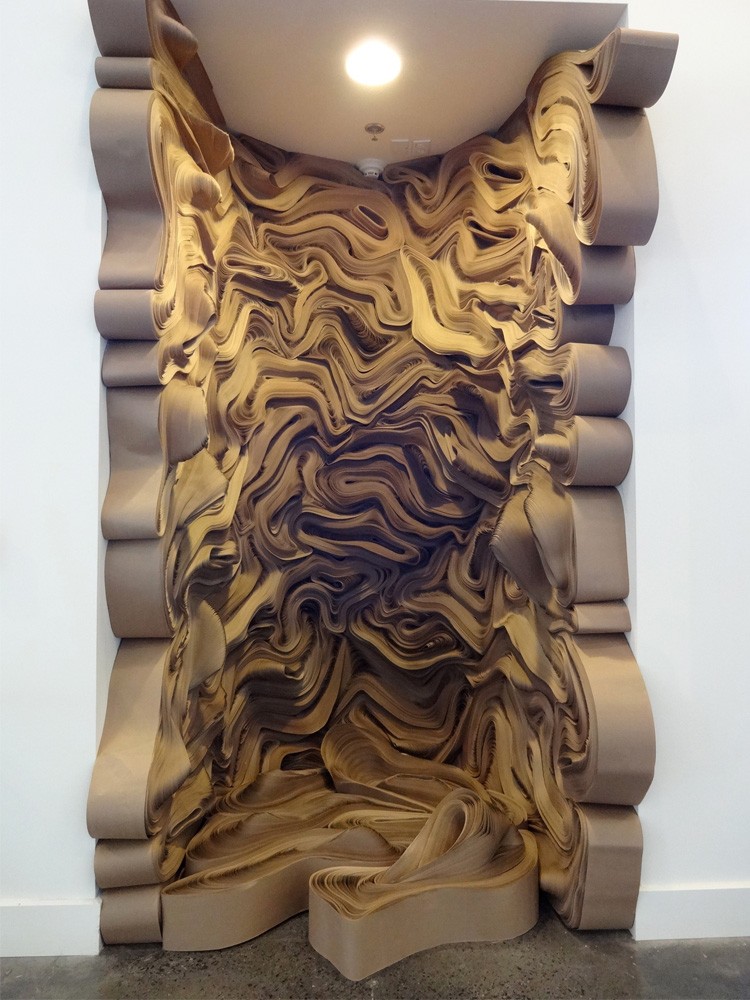The Phillips celebrates the fifth anniversary of its Intersections contemporary art series with Intersections@5, an exhibition comprising work by 20 of the participating artists. In this blog series, each artist writes about his or her work on view.
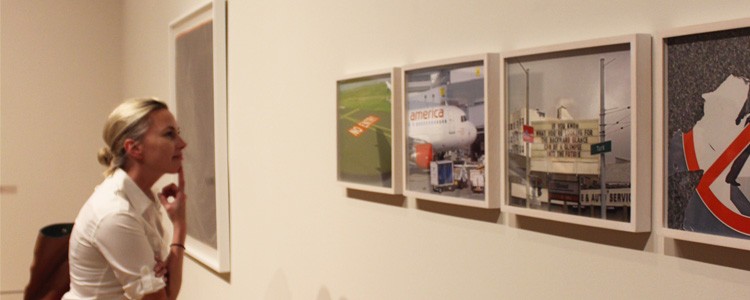
Installation view of Allan deSouza’s The World Series (2012)
Allan deSouza’s The World Series (2012), was inspired by Jacob Lawrence’s iconic 1941 Migration Series. While Lawrence’s paintings document the historical migration of African Americans from the South to Northern cities, deSouza presents a visual “script” for a fictional migration to becoming American, seen through the signage and psychology of metaphorical and political sites. Merging the past into the present, deSouza captures what might seem to be otherwise fleeting moments to stage possible futures that speak to the real effects of time and migration within the contemporary world. The four images here, from the full sequence of 60 photographs, depict pivotal points in deSouza’s “script,” in which his fictional migrant undergoes literal rites of passage, moving from one location and one time period to another.

